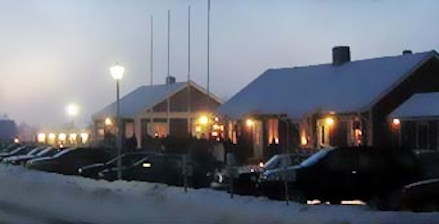Periodic discussions with Do-It-Yourselfers (DIY’s) prompts us to cover the subject of heating loops (radiation piping) frequently. These are particularly prompted by Steam-to-FHW Boiler Conversion inquiries that inevitably come to “how do I pipe my radiators if I want to use them?” A good time to review distribution piping.
There are three (3) common variations of heating loops:
- The Series Loop – The most common configuration. Piping from one radiation element (baseboard, radiators, fan convectors, etc.) to another in a tandem, serial sequence and returning.
- The Split Loop (sometimes also called the Split Series Loop) – A larger pipe feeds to the middle of a series loop and supplies water to both halves, returning again by individual pipes or to a larger pipe, closing the loop to the boiler.
- The Monoflo(w) Loop – A larger, closed piping loop that continually flows water. Radiation is teed off this “runway” to both its ends, driven by a Monoflo Tee that pulls (moves) water through them by utilizing the “venturi effect”.
The Series Loop is simple, but maybe too simple. How can you go wrong? Pipe from one radiation element to the next and close the loop from and to the boiler. Problem is, every fitting, foot and rise of pipe = resistance to flow. Resistance equals “head” that must be accommodated by properly sizing both piping and circulators to provide even heating. (You may want to also read our blog on “LAZY HEATING ZONES”.) The effects:
- Too small a circulator and/or piping size results in a “lazy” zone – temperature (heat) in the first heating element to the last can drop significantly, providing uneven heating.
- Install too large a circulator to overcome this and you risk “hydronic noise” created by over-speeding water. Take care to not create very long-piped zones as a practice.
- You inadvertently are loading your electric bill in either case. Longer circulation cycles in a “lazy” one or overpowering in the latter. Size and lay out zones properly.
The Split Loop by nature is more efficient, requiring less power to move water and lessens the temperature (heat) differential across radiation significantly. It’s also a good way to get out of trouble with a poorly performing Series Loop – as long as it’s not too poorly configured. Strategically it’s also a good choice for future splitting into individual zones. Plan ahead.
- In new construction lay out your common feed(s) and return(s) so that you anticipate future lifestyle heating options.
- In old construction, re-pipe with feeds and returns to enhance current heating conditions while again anticipating future options.
The Monoflo Loop is a technique that is currently seldom used due to cost. It takes a little more pipe (and time) to configure and requires a little more circulator to drive the venturi fittings, but if you want nearly simultaneous, even heating – this is it!
Which brings us to our major current application for the Monoflo System, convert Steam Radiators to FHW Heating. Re-pipe steam radiators into a two-pipe supply and return, driven by a Monoflo System. This is the only effective way to even out a radiator zone. There’s a lot of water in those radiators! Pipe them into a Series or even a Split Loop and you will appreciate the term “lazy” heating. DIY Steam to FHW System converters make note! The result is well-balanced, even heating with fewer, although more forceful circulator cycling.
Know your heating loop options and do your technical homework related to pipe and circulator sizing for efficient distribution.
Last Edit: 10/10/12 pdm
